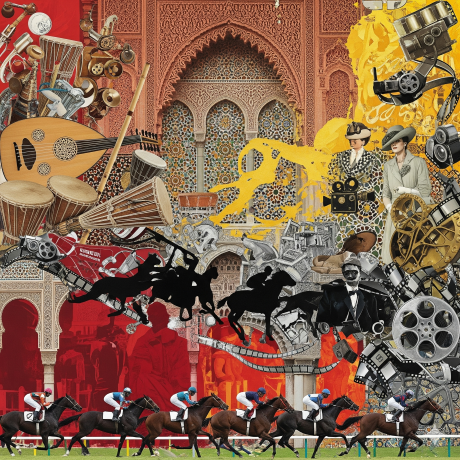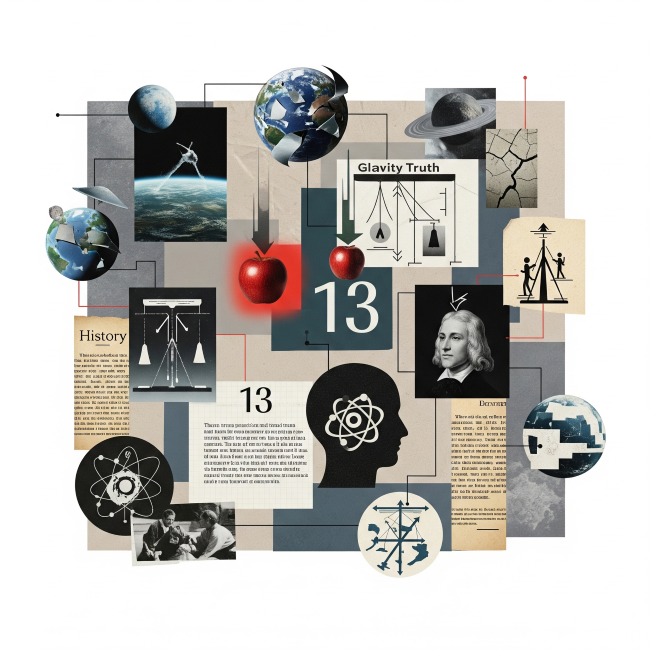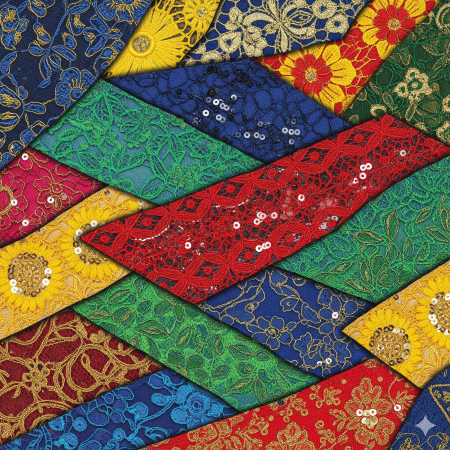Connecting Africa: The Trans-Saharan Trade Route That Took Months to Travel

Did you know that thousands of years ago, long before cars and airplanes, humans traveled to unimaginably far places?
From the 3rd century to the late 1800s, the vast, shimmering expanse of the Sahara was not a barrier but a bustling network of paths. For context, The 3rd century CE is roughly 168 to 270 years after Jesus's death. This should help you picture the time periods being spoken about.
This intricate web linked West Africa's river systems, notably the Senegal and Niger Rivers, to iconic Mediterranean ports such as Tripoli (Libya), Cairo (Egypt), and Tunis (Tunisia). Picture a sprawling network of trails crossing present-day Mauritania, Mali, Niger, Chad, Algeria, Libya, and Egypt.
For over a millennium, this lifeline intricately wove together the rich resources of empires in present-day Nigeria, Cameroon, Ghana, Togo, et cetera, with the markets of North Africa, and ultimately, with the distant shores of Europe and the Middle East. This perilous yet remarkably rewarding journey stands as a testament to human ingenuity and relentless ambition.
The Perilous Passage
The entire Trans-Saharan trade network stretched over 4,000 kilometers (2,500 miles), a distance that could take two to three months to travel by camel caravan. To put 4,000 kilometers into perspective: that's roughly the same as driving from Ikeja to Lekki about 114 times by car.
This was no gentle passage. The Sahara was a relentless adversary. Temperatures often soared above 45°C (113°F). Water sources were agonizingly rare. Sudden and ferocious sandstorms could obliterate life, burying entire caravans beneath shifting dunes. As always, the looming threat of bandits and local conflicts added another layer of danger to an already treacherous journey.
Yet, despite these brutal conditions, trade flourished. This resilience was built on meticulous planning and an unwavering demand for goods. The trusty camel, introduced to North Africa by the 3rd century CE, was the undisputed range rover of this desert highway. Known as the "ships of the desert," these remarkable creatures could carry hundreds of pounds of luggage and endure up to ten days without water.
Most long-distance traders relied on camel caravans, often comprising hundreds, even thousands, of these animals, moving in a seemingly endless procession across the golden sands.
A journey from Timbuktu to Tripoli, a major Trans-Saharan route, typically took around 70–90 days under favorable conditions. To attempt it on foot was to attempt suicide.
Raw Materials Begin To Move
From the heart of West Africa, a steady stream of valuable commodities flowed northward. Gold, the very bedrock of the great Ghana, Mali, and Songhai Empires, was traded as early as the 3rd century CE. Around the world at this time, technology was flourishing, and of course raw materials needed to be moved around.
In the Roman world, engineering prowess remained notable, with continued use of concrete, aqueducts, advanced road networks, and sophisticated military siege engines.
Meanwhile, China, even amidst its turbulent Three Kingdoms period, saw the continued rise of paper manufacturing, the development of the wheelbarrow, and intricate mechanical devices like the south-pointing chariot (a type of compass-vehicle).
In regions like Central Africa, the textile industry was well-developed, particularly using fibers from the raffia palm to create intricate and highly valued cloth.
Evidence suggests independent development of iron smelting in several African regions, with some of the earliest dates for iron production globally coming from sites in Niger, Cameroon, and Nigeria (like the Nok culture). By this period, sophisticated melting furnaces were in use, capable of reaching temperatures needed to smelt iron, and of course gold.
By the 10th to 14th centuries, the Wangara goldfields poured their bounty into the trade. The "Wangara" historically refers to a group of Soninke merchants and their associated communities who specialized in the gold trade.
The exact location of these primary gold-producing regions, often referred to as the "Island of Gold" by Arab geographers, was a closely guarded secret by the Wangara themselves to maintain their monopoly.
However, historians generally agree that the major sources lay within areas that would correspond to present-day Mali and Guinea, near the upper reaches of the Senegal and Niger Rivers.
Accompanying this gold wealth was meticulously carved, highly prized ivory. This ivory originated from the tusks and teeth of West African Animals, where their demand peaked between the 9th and 15th centuries.
Food and Other Sinister Cargo Also Move
By the 11th century, kola nuts, indigenous to the Nigerian-Ghanaian region, found their way into North African markets in ever-increasing quantities, valued for their stimulant properties.
However, not all trade was voluntary. From at least the 8th century, intensifying between the 11th and 19th centuries, enslaved people were tragically taken from West African regions and transported across the desert to be sold in North Africa and the Middle East.
On their return journeys, caravans carried different riches from North Africa and beyond. Salt, a crucial commodity in West Africa, was meticulously mined in places like modern day Mali, and exchanged for gold from the 3rd century onward.
Horses, powerful and vital for military might, arrived from North Africa to West Africa, from the 9th century. Fine textiles, woven in Egypt, Morocco, and Europe, were highly valued throughout the route's history. As empires grew, weapons, primarily imported from Europe, became increasingly vital from the 13th century, arming the powerful armies of the Mali and Songhai empires in West Africa.
Perhaps the most profound import was books and manuscripts. Islamic scholarly works flowed southward from the 11th century, transforming cities like Timbuktu into centers of learning by the 14th to 16th centuries, with libraries brimming with thousands of texts on law, science, and religion.
Faith Gets on the Road
Beyond food, and sadly human beings, the Trans-Saharan Trade Route served as a powerful conduit for the spread of ideas and beliefs. Islam, carried by intrepid Berber and Arab traders, began its spread into West Africa by the 8th century CE.
Its influence deepened with each passing century, widely adopted by the ruling elites in the Ghana Empire by the 11th century. During the zenith of the Mali Empire, between the 13th and 15th centuries, Islam became the dominant faith in cities like Timbuktu and Gao, profoundly shaping their cultures and societies.
Journeys of Consequence: Notable Figures on the Sands
While countless traders journeyed anonymously across the vast desert, some figures left an indelible mark on history, their lives inextricably linked to the Trans-Saharan trade.
One such figure was Leo Africanus, born Al-Hasan ibn Muhammad al-Wazzan al-Fasi around 1488 in Granada. This renowned Berber Andalusi diplomat, geographer, and writer traveled extensively across North Africa, including journeys across the Sahara.
While his primary purpose was diplomacy and scholarly pursuits, his detailed accounts of the cities and trade routes, particularly those in the Songhai Empire, offer invaluable insights into the Trans-Saharan trade in the 16th century. His work, Descrittione dell'Africa (Description of Africa), provided Europeans with their most comprehensive knowledge of the region for centuries, vividly depicting the bustling markets and the wealth generated by the trade. He journeyed to gather information, to observe, and to document the diverse cultures and economies that thrived along these ancient paths.
A Legacy Etched in Sand
The Trans-Saharan Trade Route was far more than a mere path for goods. It was a powerful catalyst that connected disparate economies, interwoven cultures, and forged lasting bonds of faith and intellect. This ancient path, carved by the footsteps of countless traders, scholars, and conquerors, was a journey of both immense hardship and boundless hope. Under the burning African sun, survival, faith, and fortune rode upon the backs of camels, leaving an enduring legacy etched in the sands of history.
You may also like...
Arsenal Legend Thierry Henry to Receive Prestigious BBC Lifetime Achievement Award

Former Arsenal and France football legend Thierry Henry will be honored with the Lifetime Achievement award at the 2025 ...
Maresca's Emotional Rollercoaster: Chelsea Boss Claims 'Happy' After 'Worst 48 Hours'

Chelsea boss Enzo Maresca has clarified his previous 'worst 48 hours' comments, now expressing happiness and a deeper co...
Fallout Season 2 Shatters Records, Outperforming HBO's Last of Us!

Fallout Season 2 has premiered on Prime Video to overwhelmingly positive critical and audience reception, scoring a near...
Winter Is Back! Kit Harington Hints at Massive Game of Thrones Comeback

Kit Harington has definitively shut down any possibility of reprising his role as Jon Snow, stating he doesn't want to g...
Love Blossoms: Anwuli & Kennedy's Instagram Romance Leads to #HappilyEverOffor!

Anwuli and Kennedy's love story, sparked by an Instagram connection, led to a beautiful Igbo traditional wedding. After ...
Teyana Taylor & Lucien Laviscount Light Up the 'Spirit Tunnel' with Epic Dance Moves!

The Jennifer Hudson Show features high-energy 'Spirit Tunnel' entrances, with Lucien Laviscount making a stylish walk an...
Kenya's Billion-Shilling Travel Bill: Austerity Pledge Broken?

The Kenyan government spent nearly Sh5 billion on travel in the first three months of FY 2025/26, raising concerns about...
Shehu Sani Urges Nigerians: Shun US Travel Ban, Build Nation

The United States has enacted new travel restrictions impacting Nigerian nationals, covering both immigrant and several ...
.png&w=1920&q=75)






